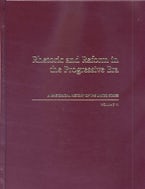This work is the first in-depth, critical analysis of America's nuclear freeze campaign of the early 1980s; other works on the topic have been written primarily by proponents of the movement. In The Nuclear Freeze Campaign, J. Michael Hogan introduces the reader to the groups and individuals involved in framing the issues, the tactics they used, and the ways in which they were treated by the media.
Through a series of case studies Hogan examines the campaign's rhetoric, the reasons for its success as a media phenomenon, and its failure as a policy initiative. He also follows the freeze debate into the arena of institutional politics and reveals a wide gap between the myth and reality of public opinion on the issue. Hogan includes a useful appendix containing the results of various polls about the nuclear freeze campaign that were conducted by 12 national pollsters between 1980 and 1984.
Finally, The Nuclear Freeze Campaign delves into the reasons why such an apparently powerful political movement had so little impact on national politics, and why it vanished so suddenly.


